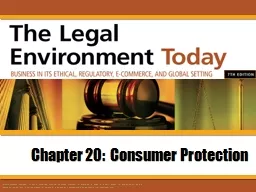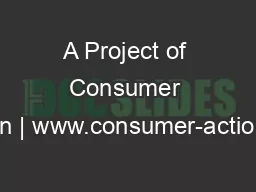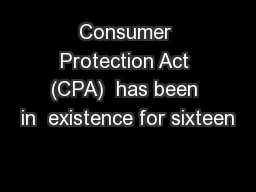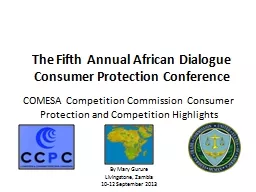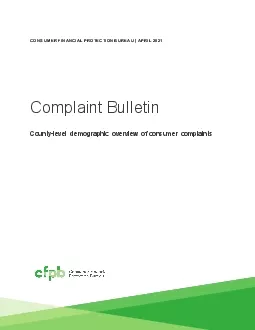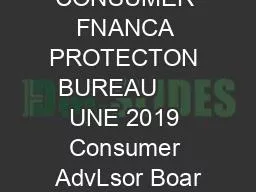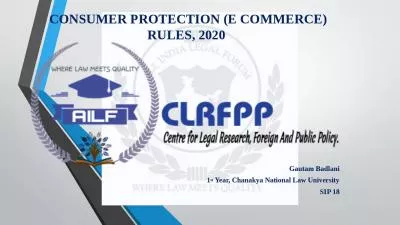PPT-Chapter 20: Consumer Protection
Author : aaron | Published Date : 2018-11-05
2013 Cengage Learning All Rights Reserved May not be copied scanned or duplicated in whole or in part except for use as permitted in a license distributed with
Presentation Embed Code
Download Presentation
Download Presentation The PPT/PDF document "Chapter 20: Consumer Protection" is the property of its rightful owner. Permission is granted to download and print the materials on this website for personal, non-commercial use only, and to display it on your personal computer provided you do not modify the materials and that you retain all copyright notices contained in the materials. By downloading content from our website, you accept the terms of this agreement.
Chapter 20: Consumer Protection: Transcript
Download Rules Of Document
"Chapter 20: Consumer Protection"The content belongs to its owner. You may download and print it for personal use, without modification, and keep all copyright notices. By downloading, you agree to these terms.
Related Documents

